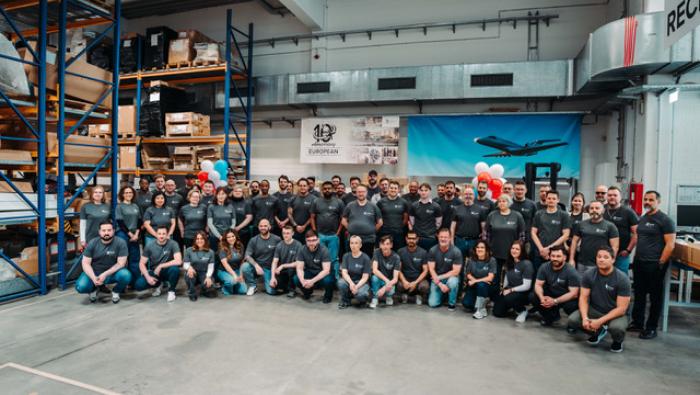Boeing's newly integrated services business is creating synergies between its commercial and defense support efforts, with digital analytics serving as an early example of how two previously separate business units are sharing lessons learned to benefit customers.
"We haven't utilized [digital tools] as much on the government side as we have on the commercial side," Boeing Global Services (BGS) v-p international government services Torbjorn Sjogren told AIN. "As we've come together, we've already seen some headroom where we could take those tools to the government side of the house, and be more accurate in our prediction and risk analysis of where we need to invest in order to ensure the readiness that we've committed to."
BGS, which combined Boeing's commercial, defense, and space support under a single, 20,000-employee business, officially began operations July 1. At the outset, its activities are little more than a blending and streamlining of existing service offerings. The company is confident that simply combining efforts and sharing lessons learned will drive synergies—and that, said Sjorgren, is what's happening with Boeing's Performance Based Logistics (PBL) business.
The long-term support contracts for defense customers are similar to the Fleet Care deals Boeing offers airlines to help capture more commercial aftermarket revenue. Boeing has nearly 3,000 commercial aircraft and 60 customers under some sort of long-term agreement. Like PBLs, Fleet Care benefits by helping predict what parts and repairs operators will need before they need them, heading off service interruptions. Because the agreements link fixed fees to minimum service levels, risk is transferred from the operator to the service provider. Boeing has been using its digital suite—combined under the Analytx brand last year—to both win new deals and reduce the cost of delivering on existing ones.
Boeing's goal for BGS is to expand it from $14.7 billion in annual revenue to $50 billion in about 10 years, relying as much as possible on organic expansion, versus acquisitions. Digital services are expected to play a large role as they mature. While much of the focus has been on the commercial aftermarket business, the early days of PBL under BGS underscore the defense market's potential. BGS has 22 international PBL customers, including four in the Asia-Pacific region. Boeing's PBLs cover seven platforms: the fixed-wing C-17—its most comprehensive program, which extends to all operators—KC-767, P-8, and F-15, as well as the Apache, Chinook and A/MH-6 helicopters.
"What we've seen already is uptick in both interest we're getting from customers, and we've also seen an uptick in our ability to be more accurate in how we are performing on our PBLs," Sjogren said. "At the end of the day, that should allow us to be more affordable."







